Woodward Product Catalog
Governor Series
1. TG Series
- TG13: A mechanical-hydraulic droop governor, suitable for steam turbines that do not require synchronous (isochronous) operation. The maximum rotation angle of the output shaft is 40°, and the recommended angular travel from no-load to full-load is two-thirds of the governor’s full stroke. It has an independent oil source, a compact structure, and can adapt to harsh working environments. It is widely used in the control of small steam turbines.
- TG17: Also a mechanical-hydraulic droop governor, used to control steam turbines that do not require synchronous operation. It features high reliability and stability, capable of maintaining the rotational speed of the equipment under complex working conditions, ensuring the efficient operation of the equipment. It is commonly applied in industrial scenarios where the requirement for rotational speed control accuracy is relatively low but stable equipment operation is needed.
- TG-13E/TG-17E: Electro-hydraulic actuators with their own independent oil sources. Suitable for steam turbines that require isochronous speed regulation, load distribution, or other functions. They are compatible with all Woodward electronic controllers and accessories, enabling precise rotational speed adjustment to meet the diverse needs of rotational speed control in different industrial processes. They play a crucial role in the control systems of large steam turbines.
2. PG Series
- PG-PL: Widely used for the rotational speed control of various diesel engines, gas engines, and steam turbines, as well as for driving pumps, compressors, and other equipment. It can precisely adjust the rotational speed according to the load changes of the equipment, ensuring the efficient operation of the equipment under different working conditions. It is an extremely important rotational speed control component in industrial power systems.
- PGPL Actuator: Can be applied to gas engines or steam turbines. It can replace PGPL, PGL, and PGD governors without changing the original PG-type drive linkage mechanism, providing great convenience for electric governor retrofit projects and helping to improve the automation control level of the equipment.
3. UG Series
- Models such as UG-5, UG7, UG8-PL, UG9, UG10, UG40: Suitable for the rotational speed control of engines or turbines with different power ratings and application scenarios. They have good versatility and stability and can be flexibly configured according to the specific requirements of the equipment. They are widely used in industrial power generation, mechanical drive, and other fields.
4. 2301 Series
- 2301A: A product of the 9905 series of controllers, used for the speed and load distribution control of generator sets driven by diesel engines, gasoline engines, steam turbines, or gas engines. It can effectively coordinate the operation of multiple generator sets, ensuring the stability and reliability of the power output of the generator sets. It is a commonly used control device in the power production field.
- 2301D/2301D-EC: Microprocessor-based control, with the same functions as 2301ALSSC, mainly responsible for load distribution and speed control. A computer can be connected to these two controllers via a 9-pin serial port (RS232 port), facilitating data interaction and remote control. They are suitable for power generation and industrial power system scenarios with certain requirements for the degree of automation control.
- 2301D-ST: Microprocessor-based control, with internal software specifically designed for the control of single-valve steam turbines. The arrangement of the wiring ports is basically the same as that of controllers like 2301A, making it easy to change the controller type. This controller can complete the core control of a small steam turbine system. Its rich input/output ports and communication serial ports facilitate communication with PLC or DCS distributed control systems, playing an important role in the construction of small steam turbine automation control systems.
Controller Family
1. MicroNet Series
- Plus Configuration: Based on a modular architecture of the VME bus, suitable for the control of various prime movers, such as gas turbines, steam turbines, water turbines, diesel engines, and gas engines. It has powerful computing capabilities and flexible programming functions. The system can be expanded by adding expansion chassis to meet application requirements of different scales. It is commonly used in the centralized monitoring and precise control of large industrial power systems.
- TMR Configuration: Adopts a triple modular redundancy structure, greatly improving the reliability and fault tolerance of the system. It is widely used in key industrial control fields with extremely high requirements for system stability, such as the control of gas turbines in large power stations and the power control of aerospace ground support equipment, ensuring the stable operation of the system under complex environments and high loads.
2. EGCP-2 Generator Controller (8406-121)
A microprocessor-based integrated engine-generator management device, mainly used for the automatic voltage and frequency regulation of generator sets. It can realize the automatic operation, protection, and management of diesel or gas engine generator sets. The designed maximum unit power is up to 30,000kW, with an operating temperature range of -40°C to +85°C, an input voltage of 9 – 32 VDC, an output of up to 12.5 A, a maximum frequency range of 50/60 Hz, and a protection level of IP 54. It can adapt to various harsh industrial environments and can meet the needs of both isolated standby power stations and grid-connected control. It plays an important role in distributed power generation, emergency power generation, and other fields.
3. 505/505E Series (9907-162, 9907-164, 9907-165, 9907-167, etc.)
Digital controllers that can be used to control industrial steam turbines, small grid turbo generators, or turbo expanders. Controlled by a microprocessor, they have multiple control modes and rich communication interfaces, facilitating user programming and system integration. They can meet the diverse needs of equipment control in different industrial processes and are widely used in the field of industrial power equipment control.
4. 5009 Fault-Tolerant Controller
Specifically designed for the control of critical steam turbines with high reliability requirements. It can be configured for pure condensing, backpressure, or single extraction/bleeding steam turbine applications. Both the CPU and I/O (TMR) are in a triple redundant form, meeting the stringent reliability requirements of the industrial steam turbine market. It adopts an on-site programmable mode, and engineers can program according to power generation or mechanical drive applications through menu-driven software. It can operate independently or be integrated with the factory DCS and is commonly used in the steam turbine control systems of large power generation enterprises and industrial scenarios with extremely high requirements for energy supply stability.
5. ProTech®203 Overspeed Protection System
It provides overspeed protection for steam turbines, gas turbines, or other prime movers by monitoring signals from three independent magnetic pickups (MPUs). It is especially suitable for situations where the reliability of mechanical overspeed protection devices decreases at high speeds (>10,000 rpm), effectively ensuring the safety of equipment during high-speed operation and preventing equipment damage and safety accidents caused by overspeed. It is widely used in the safety protection systems of various high-speed rotating equipment.
6. EASYGEN-3500 Series
Parallel generator set controllers, offering outstanding versatility and value to OEM switchgear manufacturers, generator packagers, and system integrators. It integrates complete generator control and protection functions, advanced peer-to-peer paralleling functions, and innovative features. The integrated LogicsManager™ programmable logic function provides excellent application flexibility. Usually, no additional PLC control is required, and it can also be easily integrated with SCADA or PLC-based control systems as needed. Common applications include distributed power generation (dispatchable power for utility peak demand response), isolated power supply (such as oil and gas exploration, marine, remote villages, rental/mobile equipment scenarios), microgrids (such as military, government, net-zero communities, university projects), and combined heat and power (such as wastewater treatment, biogas production/control fields).
7. PCU1000 Digital Control Module
Designed specifically for industrial automation control, suitable for the precise control of steam and gas turbines. It has a high degree of customization, supporting various input power types (AC/DC or 24VDC power input) and protection levels (offering NEMA 4 or NEMA 4X enclosure options), ensuring stable operation in harsh environments. Its compact design is convenient for installation in environments with limited space. Users can easily operate and monitor through the front-panel keyboard and display, and the optional Modbus protocol support further enhances the flexibility and compatibility of the system. It plays an important role in the turbine control section of industrial automation production lines.
Actuators and Valves Products
1. IGV Actuator
Mainly used to control the position of the inlet guide vanes of industrial gas turbine systems. It has a dual function: in case of an emergency, it can quickly close the inlet guide vanes of the turbine to ensure equipment safety; during normal operation, it can provide precise position control of the turbine inlet guide vanes, optimizing the air intake of the gas turbine, improving combustion efficiency and overall performance. It is a key actuator component in gas turbine control systems.
2. SonicFlo™ Valve and Electric SonicFlo™ Gas Valve
- SonicFlo™ Valve: Used to control the gas flow in the combustion systems of industrial or power generation gas turbines. Through a special design, it effectively reduces system pressure loss, improves gas utilization efficiency, and reduces energy consumption. It has important application value in the flow control of gas turbine combustion systems.
- Electric SonicFlo™ Gas Valve: Specifically designed for large industrial gas turbine engines (with single or multiple combustion manifold systems), it has extremely precise fuel metering and fast-response closing capabilities. Adopting the SonicFlo design concept, it not only minimizes system pressure loss but also eliminates the need for valve discharge pressure measurement and compensation. When used in combination with an EM digital driver, it can eliminate the need for hydraulic and pneumatic systems in the fuel system, simplifying the system structure and improving reliability. It is widely used in the gas supply control of large gas turbine power generation and industrial power equipment.
3. GS Series Gas Fuel Metering System
- GS16 (9907-553 series): Suitable for industrial gas turbines within a certain power range. It can precisely control the gas flow, providing a reliable interface between the electronic engine control system and the gas turbine, ensuring the stability and efficiency of the combustion process of the gas turbine. It is relatively common in small and medium-sized gas turbine power systems.
- GS40/50: As the latest version of the gas fuel metering valve series rotary control valves, it integrates an actuator and an onboard driver. Developed based on years of market application experience, its self-cleaning valve design can adapt to various complex application scenarios, from clean pipeline gas to wellhead gas, greatly improving the adaptability and reliability of the equipment. It is widely used in the fuel supply systems of various industrial gas turbines.
4. LQ Series Liquid Fuel Metering Valve
Specifically designed for industrial and aerospace-derived gas turbine engines with an output power range of 1,000 kW to 42,000 kW. It uses a corrosion-resistant shear-type metering component, positioned by a high-torque electric actuator, ensuring long-term stable operation in various liquid fuel services. It provides a reliable connection between the electronic engine control system and the gas turbine in power generation, mechanical drive, and marine applications, playing a key role in gas turbine power systems involving liquid fuels.
5. Other Actuators
- EG-10P Series Proportional Actuators: Can output corresponding driving force in proportion to the size of the control signal, enabling precise control of equipment. They are commonly used in industrial automation control scenarios with high requirements for execution accuracy, such as the material conveying control of precision chemical production equipment.
- Actuators such as EML100, TM25/-200LP: With different output forces and stroke ranges, they can meet the power transmission and action execution requirements of various industrial equipment. They are widely used in material handling, valve control, and other links of industrial production lines.
6. Servo Valves
- Two-Nozzle Flapper Servo Valves (3.2 gpm series, 4.0 gpm series, MODEL 10 series, etc.): By controlling the flow and direction of hydraulic oil, they achieve precise control of the actuator. They are characterized by fast response speed and high control accuracy and are commonly used in industrial automation systems with extremely high requirements for control accuracy and response speed, such as the hydraulic control systems of aerospace ground simulation equipment and the feed drive systems of high-end CNC machine tools.
Automation Modules
1. Speed Control Module
- 9907-014: As a key component of the 9900 series in turbine control systems, it is mainly responsible for monitoring and regulating the rotational speed of the turbine. By connecting with speed sensors, it can obtain the current rotational speed of the turbine in real-time, compare it with the reference speed, and calculate the necessary adjustment amount using advanced control algorithms to maintain the turbine within the required rotational speed range. It has a communication interface, enabling data exchange with the central control system, realizing remote monitoring, diagnosis, and control adjustment. It can also work in coordination with other control modules to ensure the stability and efficiency of the entire turbine system. It is the core rotational speed control unit in various turbine control systems.
2. Fuel Management Module
- Fuel Control Module: By optimizing the fuel flow and combustion process, it improves energy utilization efficiency and reduces harmful gas emissions. It can precisely adjust the fuel supply according to the operating conditions and load changes of the equipment, ensuring the efficiency and stability of the combustion process. It is widely used in the combustion control of various industrial equipment that uses fuel as an energy source, such as boilers and gas turbines.
- Fuel Metering Module: Precisely measures fuel consumption, providing accurate data support for real-time monitoring. It helps enterprises better understand the fuel usage situation. Through the analysis of fuel consumption data, it can optimize production processes and reduce operating costs. It plays an important role in data collection and analysis in industrial energy management systems.
3. Safety and Protection Modules
- Overload Protection Module: Effectively prevents equipment damage caused by excessive load or pressure. It monitors the operating parameters of the equipment in real-time. Once the load or pressure exceeds the set threshold, it immediately takes measures (such as reducing the operating speed of the equipment, cutting off the power supply, etc.) to ensure that the equipment operates within a safe range. It is widely used in the safety protection systems of various industrial equipment.
- Flameout Protection Module: Monitors the combustion status in real-time. Once abnormal situations such as flameout are detected, it immediately initiates emergency measures (such as cutting off the fuel supply, activating the alarm device, etc.) to avoid safety accidents. It is an essential component in the safety control of industrial equipment involving combustion processes, such as boilers and heating furnaces.
- Turbine Monitoring System: Monitors key parameters of the turbine, such as vibration and temperature, in real-time. Once the parameters exceed the normal range, it immediately triggers an alarm to remind the staff to handle it in a timely manner, ensuring the safe and reliable operation of the equipment. Through the real-time monitoring and data analysis of the equipment operation status, it can predict equipment failures in advance, providing a basis for equipment maintenance and improving the availability and service life of the equipment. It is widely used in the management of large turbine equipment.
4. Data Acquisition, Processing, and Communication Modules
- Data Acquisition Module (DAM): Responsible for collecting a large amount of data from various sensors, such as temperature sensors, pressure sensors, and flow sensors. It provides raw data support for the evaluation of the system operation status. Its high-speed and accurate data acquisition ability ensures that the system can obtain real-time operation information of the equipment in a timely manner. It is the basic link for data acquisition in industrial automation control systems.
- Data Processing Module (DPM): Conducts in-depth analysis of the collected data to explore the value behind the data. Using data mining algorithms and data analysis models, it provides decision-making basis for optimizing system performance. For example, through the long-term analysis of equipment operation data, it can identify potential energy waste points or equipment failure hazards, thereby guiding the system for optimization and upgrading. It plays a key role in industrial big data applications and intelligent control system optimization.
- Communication Module
- Serial Communication Module (supporting RS-232 or RS-485 protocol communication): Enables serial data transmission between devices. It has the characteristics of long communication distance and strong anti-interference ability. It is suitable for some industrial scenarios where the requirement for data transmission speed is not high but long-distance and stable communication is needed, such as data transmission between sensors and controllers in industrial fields.
- Ethernet Communication Module: Realizes high-speed data transmission through Ethernet, meeting the high requirements of industrial automation for data communication. It can quickly and accurately exchange information between devices and between devices and the upper control system, supporting real-time transmission of large amounts of data. It provides a powerful communication guarantee for realizing industrial Internet of Things, remote monitoring, and diagnosis functions and is widely used in the construction of modern industrial automation production networks.
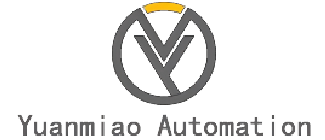
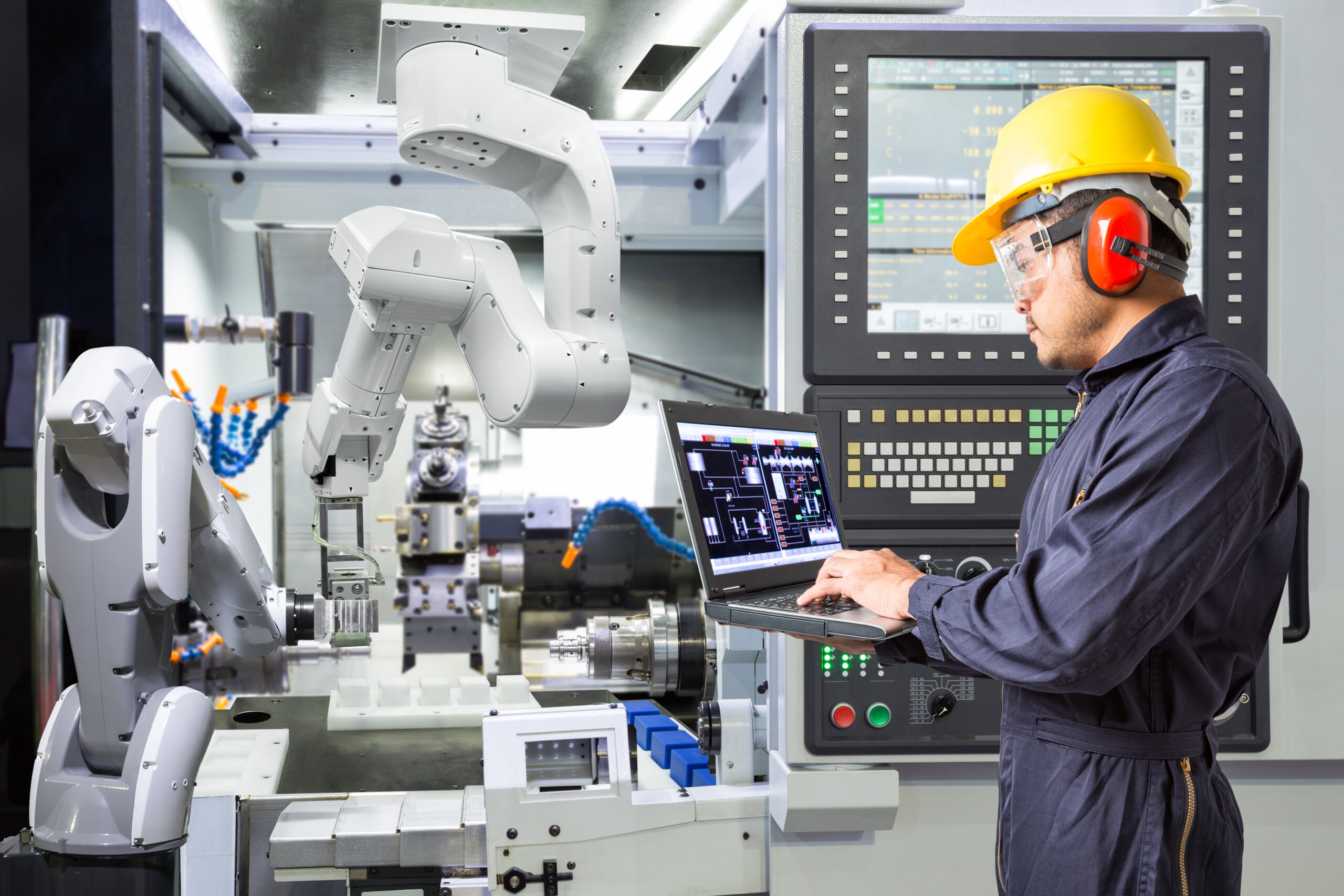
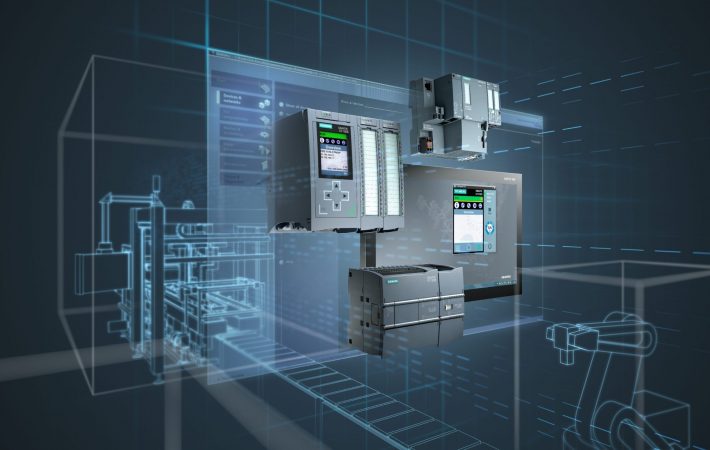

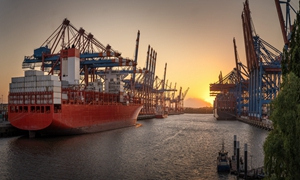
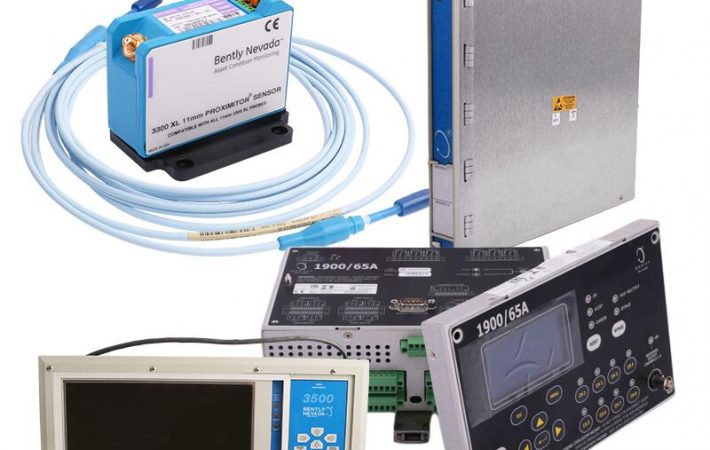



Leave a comment
Your email address will not be published. Required fields are marked *